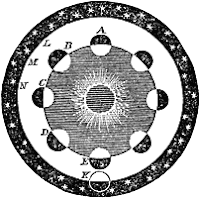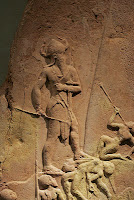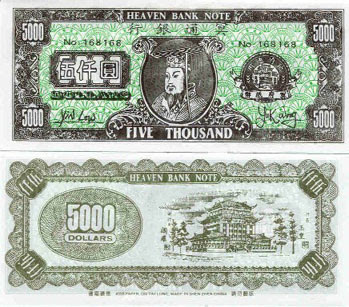The Day before Midsummer..and Hebrew.
From the 18th (Friday) to the 21st (tomorrow) the sun stands still.
I am at a cross roads, tricking myself that life is sometimes simple, knowing that it never is; trying to apply logic and failing. I am convincing myself that there is just too much information (that I'd never collect enough and that I don't even have the brain to use it) and feeling bad for not even trying.
Basically it is easier to sit, and be a Robinsoner, than to try and resolve the pull to get up and go!
If I think about this logically I know that the Persephone myth has nothing to do with Midsummer. The deities dragged unwilling to The Great Below are vegetation; they go in autumn, they go in the spring, they go when they are harvested.
Except...the midsummer offering is made to ensure that the wheat will thrive. Midsummer is the tipping point, the time between ripening and being ripe enough to harvest.
Oh poo!
And my Bronze Age 'chapter' has a midsummer connection. In the public imagination (and the public of my time are most decidedly a part of the picture) at midsummer the megaliths and stone circles open. Maud Cunnington described the burial site of the child at Woodhenge as being aligned (Woodhenge itself is aligned...) on the midsummer sunrise. I don't recall any such concept being applied to The Sanctuary, but midsummer is the time when people visit and use the prehistoric sites, and I wont be there.
The only way I could tell if Woodhenge was a midsummer place would be to be there tomorrow morning, likewise the Sanctuary. Knowing that I can't be in both places at once, and that cloud will probably hide the sun, doesn't make any difference to how I feel.
Even though logic isn't my strength, I return to logic. My skill has always been an ability to find texts, to sift information; to make connections. There must be a lot of computer wrangling to get through, loads of Livy and Strabo and dear old Diodorus and of course the reason I started to write this -Stukeley. Besides which, Tesco is delivering the shopping tomorrow afternoon, petrol costs too much; if I went there wouldn't be anywhere to park my car.
The Bronze Age burials within the concentric stone and wood circles of Woodhenge and the Sanctuary are sad places; stories I cannot finish. But the contemporary beliefs (including the seventeenth century) are within my reach, so let's begin.
The Sanctuary, Hakpen -the snake's head.
You see on the left of the image, a barrow (that may or may not be Roman). The road runs between the barrow on one side, and the entrance to the Sanctuary on the other. Avebury and West Kennet, and Silbury are behind me.
The first concrete rectangle (painted blue on top) directly in front of me, as I took this photo, has a buried stone in front of it. This marks the place of burial.
Why did Stukeley call this site, the serpent's head, and in particular believe there to be a Hebrew connection with a British, prehistoric site?
In short, if Stukeley took his bible seriously then the easiest answer is, all our ancestors spoke Hebrew because we are all descended from the only family to have survived the flood.
The bible cites the tower of Babel as the reason for different languages. If the Tower of Babel happened after the flood, then one may assume that the people god 'loved' kept their Hebrew?
The bible provides the foundation for the belief in Hebrew as 'God's' language.
In 1723 Henry Rowlands published: Mona Antiqua Restaurata: An Archaeological Discourse on the Antiquities, Natural and Historical, of the Isle of Anglesey, the Antient Seat of the British Druids. Rowlands used Greek and Roman classics, plus brand new material provided by archeology and philology. Rowlands liberally applied Hebrew translations to Welsh prehistoic monuments because a French scholar, Samuel Bochart (1599-1667) had stated that the word Britain "is a corruption of the Hebrew words Barat Anach," meaning islands of tin. He went further, and stated that there exists close phonetic associations between Hebrew and Welsh.
Therefore Stukeley had good reason to believe that British words had a Hebrew origin, and in his mind it was obvious that people who spoke languages closest to Hebrew, were closer to the original religion. It made sense to him to consider that the patriarchal religion of the Old Testament was the original religion of mankind, and that this 'pure' religion had degenerated into idol-worship as (Canaanite religion) emerged.
William Stukeley was born in 1687, though there was colonisation of America by British settlers at that time, and some information coming back about indigenous hunter-gatherer communitees, it never crossed William Stukeleys mind that the British were anything but people of the book. The Romans had left written reports describing Druids, and Stuckeley dismissed the negative, stressed the positive and decided that Avebury ( in Stukeley's account of Avebury- 1740) was proof that the Druids were proto-Christians.
The proof was in the lay-out -three circles, one large containing two small, 'God in three persons' .
And you are right, it isn't as simple as I'm making it out to be...What has the Serpent's head (Stukeley's name for the Sanctuary) got to do with the Holy Trinity?
Having decided that the Sanctuary was linked by a serpentine path to Avebury, Stukeley came up with a Hebrew (in the loosest sense) name for the place: Hakpen.
For the record, this name seems to me to be a totally spurious word. No one before Stukeley is recorded as calling the site anything much, only Mill field (from the ancient word mill, a 'machine' used to grind grain, and field.)
Hargrave Jennings (1817-1890): a British Freemason, Rosicrucian, author on occultism and esotericism, and amateur student of comparative religion, seems to be quoting from Stukeley. In his book: Ophiolatreia: An Account of the Rites and Mysteries Connected with the Origin, Rise, and Development of Serpent Worship(1889)wrote:
Well I have to stop, I'm running out of time today. This story continues with the connections between Stukeley and Sir Isaak Newton.
The fact that Stukeley became a Freemason (June 6, 1721).
How the Reformation described the word of god as now 'open-source', free for all men to read within the book of nature ( the natural world) and the book of God, (Scripture)
Finally how the Neoplatonic conception of reality describes a kind of *fall* which makes physics -for Newton- and in proto-archeology for Stukeley, a recovery of a better, a higher truth, rather than a new discovery....
I am at a cross roads, tricking myself that life is sometimes simple, knowing that it never is; trying to apply logic and failing. I am convincing myself that there is just too much information (that I'd never collect enough and that I don't even have the brain to use it) and feeling bad for not even trying.
Basically it is easier to sit, and be a Robinsoner, than to try and resolve the pull to get up and go!
If I think about this logically I know that the Persephone myth has nothing to do with Midsummer. The deities dragged unwilling to The Great Below are vegetation; they go in autumn, they go in the spring, they go when they are harvested.
Except...the midsummer offering is made to ensure that the wheat will thrive. Midsummer is the tipping point, the time between ripening and being ripe enough to harvest.
Oh poo!
And my Bronze Age 'chapter' has a midsummer connection. In the public imagination (and the public of my time are most decidedly a part of the picture) at midsummer the megaliths and stone circles open. Maud Cunnington described the burial site of the child at Woodhenge as being aligned (Woodhenge itself is aligned...) on the midsummer sunrise. I don't recall any such concept being applied to The Sanctuary, but midsummer is the time when people visit and use the prehistoric sites, and I wont be there.
The only way I could tell if Woodhenge was a midsummer place would be to be there tomorrow morning, likewise the Sanctuary. Knowing that I can't be in both places at once, and that cloud will probably hide the sun, doesn't make any difference to how I feel.
Even though logic isn't my strength, I return to logic. My skill has always been an ability to find texts, to sift information; to make connections. There must be a lot of computer wrangling to get through, loads of Livy and Strabo and dear old Diodorus and of course the reason I started to write this -Stukeley. Besides which, Tesco is delivering the shopping tomorrow afternoon, petrol costs too much; if I went there wouldn't be anywhere to park my car.
The Bronze Age burials within the concentric stone and wood circles of Woodhenge and the Sanctuary are sad places; stories I cannot finish. But the contemporary beliefs (including the seventeenth century) are within my reach, so let's begin.
The Sanctuary, Hakpen -the snake's head.
You see on the left of the image, a barrow (that may or may not be Roman). The road runs between the barrow on one side, and the entrance to the Sanctuary on the other. Avebury and West Kennet, and Silbury are behind me.
The first concrete rectangle (painted blue on top) directly in front of me, as I took this photo, has a buried stone in front of it. This marks the place of burial.
Why did Stukeley call this site, the serpent's head, and in particular believe there to be a Hebrew connection with a British, prehistoric site?
In short, if Stukeley took his bible seriously then the easiest answer is, all our ancestors spoke Hebrew because we are all descended from the only family to have survived the flood.
The bible cites the tower of Babel as the reason for different languages. If the Tower of Babel happened after the flood, then one may assume that the people god 'loved' kept their Hebrew?
The bible provides the foundation for the belief in Hebrew as 'God's' language.
In 1723 Henry Rowlands published: Mona Antiqua Restaurata: An Archaeological Discourse on the Antiquities, Natural and Historical, of the Isle of Anglesey, the Antient Seat of the British Druids. Rowlands used Greek and Roman classics, plus brand new material provided by archeology and philology. Rowlands liberally applied Hebrew translations to Welsh prehistoic monuments because a French scholar, Samuel Bochart (1599-1667) had stated that the word Britain "is a corruption of the Hebrew words Barat Anach," meaning islands of tin. He went further, and stated that there exists close phonetic associations between Hebrew and Welsh.
Therefore Stukeley had good reason to believe that British words had a Hebrew origin, and in his mind it was obvious that people who spoke languages closest to Hebrew, were closer to the original religion. It made sense to him to consider that the patriarchal religion of the Old Testament was the original religion of mankind, and that this 'pure' religion had degenerated into idol-worship as (Canaanite religion) emerged.
William Stukeley was born in 1687, though there was colonisation of America by British settlers at that time, and some information coming back about indigenous hunter-gatherer communitees, it never crossed William Stukeleys mind that the British were anything but people of the book. The Romans had left written reports describing Druids, and Stuckeley dismissed the negative, stressed the positive and decided that Avebury ( in Stukeley's account of Avebury- 1740) was proof that the Druids were proto-Christians.
The proof was in the lay-out -three circles, one large containing two small, 'God in three persons' .
And you are right, it isn't as simple as I'm making it out to be...What has the Serpent's head (Stukeley's name for the Sanctuary) got to do with the Holy Trinity?
Having decided that the Sanctuary was linked by a serpentine path to Avebury, Stukeley came up with a Hebrew (in the loosest sense) name for the place: Hakpen.
For the record, this name seems to me to be a totally spurious word. No one before Stukeley is recorded as calling the site anything much, only Mill field (from the ancient word mill, a 'machine' used to grind grain, and field.)
Hargrave Jennings (1817-1890): a British Freemason, Rosicrucian, author on occultism and esotericism, and amateur student of comparative religion, seems to be quoting from Stukeley. In his book: Ophiolatreia: An Account of the Rites and Mysteries Connected with the Origin, Rise, and Development of Serpent Worship(1889)wrote:
Perhaps the most remarkable of all British relics of this worship are to be found on the hills overlooking the village of Abury, in the county of Wiltshire. There, twenty-six miles from the celebrated ruins of Stonehenge, are to be found the remains of a great Serpentine Temple---one of the most imposing, as it certinaly is one of the most interesting, monuments of the British Islands. It was first accurately described by Dr. Stukeley in 1793 in his celebrated work entitled Abury, a Temple of the British Druids. It was afterwards carefully examined by Sir R. C. Hoare and an account published in his elaborate work Ancient Wiltshire. Dr. Stukeley was the first to detect the design of the structure and his conclusions have been sustained by the observations of every antiquary who has succeeded him.Hargrave Jennings goes on (chapter 2) to relate prehistoric cup and ring carvings, with Hindu practices:
The temple of Abury consisted originally of a grand circumvallation of earth 1,400 feet in diameter, enclosing an area of upwards of twenty-two acres. It has an inner ditch and the height of the embankment, measuring from the bottom of the ditch, is seventeen feet. It is quite regular, though not an exact circle in form, and has four entrances at equal distances apart, though nearly at right angles to each other. Within this grand circle were originally two double or concentric circles composed of massive upright stones: a row of large stones, one hundred in number, was placed upon the inner brow of the ditch. Extending upon either hand from this grand central structure were parallel lines of huge upright stones, constituting, upon each side, avenues upwards of a mile in length. These formed the body of the serpent. Each avenue consisted of two hundred stones. The head of the serpent was represented by an oval structure consisting of two concentric lines of upright stones; the outer line containing forty, the inner eighteen stones. This head rests upon an eminence known as Overton, or Hakpen Hill, from which is commanded a view of the entire structure, winding back for more than two miles to the point of the tail, towards Bekhampton.
"To our name of Hakpen, alludes ochim, called 'doleful creatures' in our translation." Isa (13 v. 21), speaking of the desolation of Babylon, says: Wild beasts of the desert shall lie there, and their houses shall be full of ochim, and owls shall dwell there, and satyrs shall dance there." St. Jerome translates it "serpents." The Arabians call a serpent Haie, and wood-serpents Hageshin; and thence our Hakpen; Pen is "head" in British.
No one who compares the stone Yonis of Benares, sent herewith, with the engravings on the first page of the work on the Rock Markings of Northumberland and Argyleshire, published privately by the Duke of Northumberland, will deny that there is an extraordinary resemblance between the conventional symbol of Siva worship of to-day and the ancient markings on the rocks, menhirs, and cromlechs of Northumberland, of Scotland, of Brittany, of Scandinavia, and other parts of Europe.It is fascinating that Hargrave Jennings is looking East for meanings in British prehistory, away from the Bible. It reminds me that in the 1970s, people were finding Sanskrit origins for words, everywhere. I'm sure I remember being told that Welsh was actually the closest language to Sanskrit in existence (!).
Well I have to stop, I'm running out of time today. This story continues with the connections between Stukeley and Sir Isaak Newton.
The fact that Stukeley became a Freemason (June 6, 1721).
How the Reformation described the word of god as now 'open-source', free for all men to read within the book of nature ( the natural world) and the book of God, (Scripture)
Finally how the Neoplatonic conception of reality describes a kind of *fall* which makes physics -for Newton- and in proto-archeology for Stukeley, a recovery of a better, a higher truth, rather than a new discovery....


